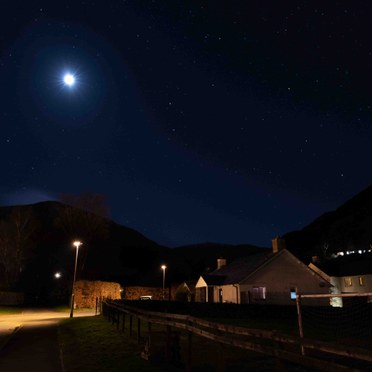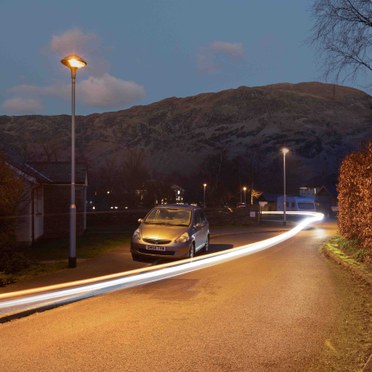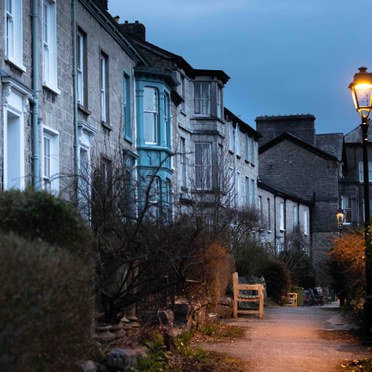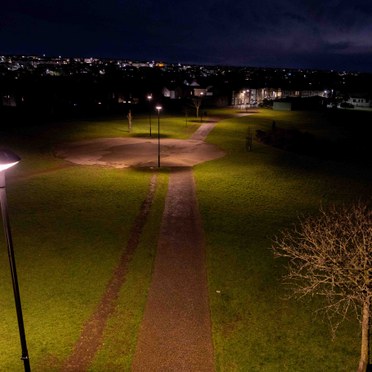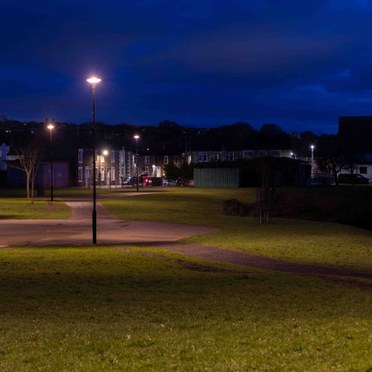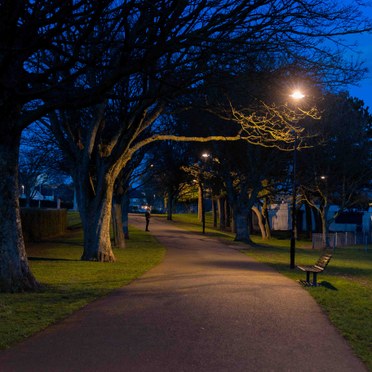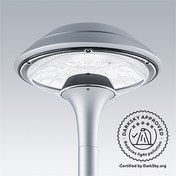Cumbria, UK
Products
- Lamp efficacy
Lamp efficacy
Ensuring the lamp efficiently converts electricity into light (lm/W).
- Ballast classification
Ballast classification
Controlling the electricity supply to the lamp (Energy Efficiency Index).
- Luminaire distribution
Luminaire distribution
Controlling light emission using optics which bend and shape the light to the correct location.
- System efficacy
System efficacy
Combining optical and thermal control within the luminaire (luminaire lm/W).
- Presence/absence detection
Presence/absence detection
Presence: Lights automatically turn on/off with movement. Absence: Lights automatically turn off and must be manually switched on.
- Daylight detection
Daylight detection
Artificial lighting which responds to the natural light conditions.
- Constant illuminance
Constant illuminance
A function designed to produce correct light levels for the duration of the maintenance period.
- Task-scene setting
Task-scene setting
Allowing the user to set scenes and adapt the lighting to different tasks.
- Timed off
Timed off
Automatic cut-off can be installed to turn all lights off during unoccupied hours.
- Task lighting
Task lighting
Lighting task areas with the correct amount of light.
- Zoning of lighting
Zoning of lighting
Lighting is zoned according to area use.
- Maintenance schedule
Maintenance schedule
Maintenance must be performed in response to product age, performance and environment.
- Waste light
Waste light
Eliminating waste light which does not hit the intended target.
- Reflectance
Reflectance
Taking advantage of light which is reflected from the surface within the space.
- Visible smart metering
Visible smart metering
Results of actions can be quickly seen as increased or decreased energy use to encourage responsible energy consumption.
Cumbria, located in the north west of England and bordering Scotland, is a county known globally for its spectacular Lakes. The Lake District – now a UNESCO World Heritage Site – attracts millions of tourists each year. But Cumbria is also home to many rural villages, seaside communities and bustling towns. And what these places all share is the desire to protect their dark skies, preserve nocturnal wildlife and improve human wellbeing.
Cumbria County Council’s lighting team have worked hard to achieve this over many years, forming strong relationships with organisations such as Friends of the Lake District, an independent charity which is dedicated to protecting and enhancing Cumbria’s landscapes. For decades, Cumbria County Council have also worked with Thorn Lighting to provide solutions and luminaires across the county, including road and street lighting, urban lighting for parks and architectural lighting for landmarks and buildings.
But most recently, Cumbria County Council has teamed up with Thorn Lighting to install innovative technologies and solutions that reduce light pollution and help to protect the nocturnal environment.
Lining the pavement of the historic Cliff Terrace in Kendal, restored cast iron columns have been fitted with Thorn’s EP145 post-top lanterns providing an energy efficient solution. This change has improved the quality of lighting for residents in the vicinity. One resident, Lucy Bound commented, “The previous luminaires were lighting up our gardens and houses, but not the pathways. Now, the lighting is in the right place, leaving the garden dark for wildlife, and people no longer have light trespassing into their bedrooms, improving sleep quality. There have been many side benefits to this project. It has also had a really positive impact on the community, bringing people back out of their homes and uniting them with a shared interest, which has been really great to see, especially after lockdown.”
Initially, luminaires were installed as part of a pilot project, but after positive feedback from residents, the council have decided to roll out the dark-sky friendly lighting solutions to more locations throughout Cumbria. In addition to the EP145 lanterns, Plurio post top luminaires equipped with NightTune technology have been introduced to other areas including the picturesque village of Glenridding which sits next to Lake Ullswater, the coastal town of Whitehaven and neighbouring Workington. The installation in Castle Park in Whitehaven was supported by funding from the Home Office’s Safer Streets initiative, with the new lighting creating a more welcoming environment in the hours of darkness. At the Glenridding site, the luminaires have been installed on a quiet cul-de-sac which backs onto open land. For this reason, shields were used on one half of the Plurio lantern, completely eradicating any unnecessary light spill.
The NightTune system used in the Plurio luminaires automatically adjusts the level of light emitted by a luminaire, and its colour temperature, to suit the exact time of night and level of traffic. There are a multitude of benefits for using this technology, such as the warmer colour temperatures being less harmful to wildlife, and minimised light spill and reduced sky glow.
Ian Harker, Cumbria County Council’s Lighting Manager said, “Cumbria has some of the darkest skies in Great Britain, and we are custodians of both the night sky and the world-class environment here. So we realise that in the work we do, we need to be careful and mindful that we don’t have a negative impact. We have a strong relationship with Friends of the Lake District, and after discussions with the team at Thorn Lighting, were confident that these innovative technologies and solutions were fitting for our county. We’ve had a lot of positive feedback from residents, including reports of returning nocturnal wildlife, including larger bats feeding in Kendal’s Cliff Terrace.”
“For other councils or organisations looking to protect their dark skies and enhance their urban spaces through lighting, I’d say innovative technology is the key to unlocking a better service for residents and visitors. The important thing is to get to know your communities and the people you are providing the service to. So you need to talk and be able to listen, and importantly, be open to new ideas.”
All of the luminaires which have been installed as part of this project have been granted the International Dark-Sky Association Fixture Seal of Approval. This Fixture Seal of Approval is granted to products that meet dark-sky requirements and demonstrate to end users that the products they are specifying point light downwards (zero upwards light), have a warm colour temperature of 3000 kelvin or less and are dimmable down to 10% of their total light output.
The International Dark-Sky Association is recognised as the global authority on light pollution and is the leading organisation combating this issue worldwide.
The IDA Fixture Seal of Approval is a highly regarded accreditation for manufacturers. The process to achieve this accreditation reviews key features and benefits of a luminaire, its fundamental design and deep dive analysis of photometric data to ensure the product meets strict requirements to limit light pollution.
Thorn Lighting’s Key Account Manager Craig Lensky, who worked closely with Cumbria County Council’s Lighting Team throughout the project added, “Our advice for others wanting to carry out a project like this, is to do the research. Speak to the people who are familiar with the nocturnal habitat in the place you want to light, and then tailor a solution that benefits everyone and everything.”
Ian Harker concluded, “We’ve always found the people at Thorn Lighting really approachable. The service we’ve received is exceptional. What we find is that they are willing to listen to their customers and work together to find solutions. If you couple that with the range of products that are available, we’ve usually found that there’s a solution there for us to use and apply.”

